A recent paper examined data from NASA’s Juno mission and found that Jupiter’s atmosphere not only contains metals but also is not a homogenous mix. The likely culprits are the remains of planetesimals from the early solar system. Plus, a Voyager update, a new Mercury image, sulfur residue on Europa, and a review of “For All Mankind”.
Podcast
Show Notes
Voyager not shutting down… yet
- Record-Breaking Voyager Spacecraft Begin to Power Down (Scientific American)
BepiColombo catches glance at Mercury
- ESA press release
Ancient rifting drove climate change
- University of Southampton press release
- “Transient mobilization of subcrustal carbon coincident with Palaeocene–Eocene Thermal Maximum,” Thomas M. Gernon et al., 2022 June 23, Nature Geoscience
Nothing but stars
- NASA Goddard image release
Mapping sulfur residue on Europa
- SwRI press release
- “Mid-ultraviolet Hubble Observations of Europa and the Global Surface Distribution of SO2,” Tracy M. Becker et al., 2022 June 2, The Planetary Science Journal
Jupiter’s atmosphere contains planetary bits
- SRON press release (Dutch and English)
- “Jupiter’s inhomogeneous envelope,” Y. Miguel et al., 2022 June 8, Astronomy & Astrophysics
NASA’s CAPSTONE soon to launch
- PDF: CAPSTONE launch press kit (Rocket Lab)
Transcript
Today, we discuss multiple missions that have been around longer than I have!
One has even been around longer than I have.
Really? I didn’t know that was a thing.
Anyway, we have spacecraft, and for those of you who wanted an escape, I have a review of the alternate timeline show “For All Mankind”.
I was born after Apollo. I’m not that old!
And we have planetary science stellar images and more.
All of this and more, right here on the Daily Space.
I am your host Dr. Pamela Gay.
And I am your host Erik Madaus.
And we’re here to put science – old and new – in your brain.

NASA’s Voyager probes have been coasting in interstellar space after leaving the solar system in the mid-2010s. A recent article in Scientific American said that the spacecraft would be shut down soon. That wasn’t wrong, but a little misleading. It has a few years of life yet.
NASA posted an update on the spacecraft’s Twitter recently saying that the spacecraft is still functioning and will still continue functioning up to the 2030s if possible. Five of the original eleven science instruments are still running, and NASA expects they can continue operating these instruments until 2027.
After that, Voyager will just phone home, sending and receiving data. Its transmitter only uses 23 watts of power, two and a half times less power than the average lightbulb. And that tiny amount of power sent us back thousands and thousands of amazing pictures and scientific data on Jupiter, Saturn, Uranus, and Neptune.
The Voyager spacecraft are extremely simple, with very little software to go wrong. The whole spacecraft has less memory than a key fob, according to Linda Spilker, a JPL scientist quoted in the Scientific American article. Microprocessors weren’t around when the spacecraft was being designed. Most of the vehicle functions are hardwired. The one resource driving how long Voyager can last is its power supply.
Voyager uses Radioisotope Thermoelectric Generators, RTGs, which take the heat produced by small pellets of plutonium-238 and convert that into a trickle of electricity. These were chosen because the spacecraft would be operating in the outer solar system and beyond, so solar panels would be insufficient. RTGs can provide power for decades, but Voyager has been in space for 45 years. So the mission will be coming to an end in a few years… just not right now.
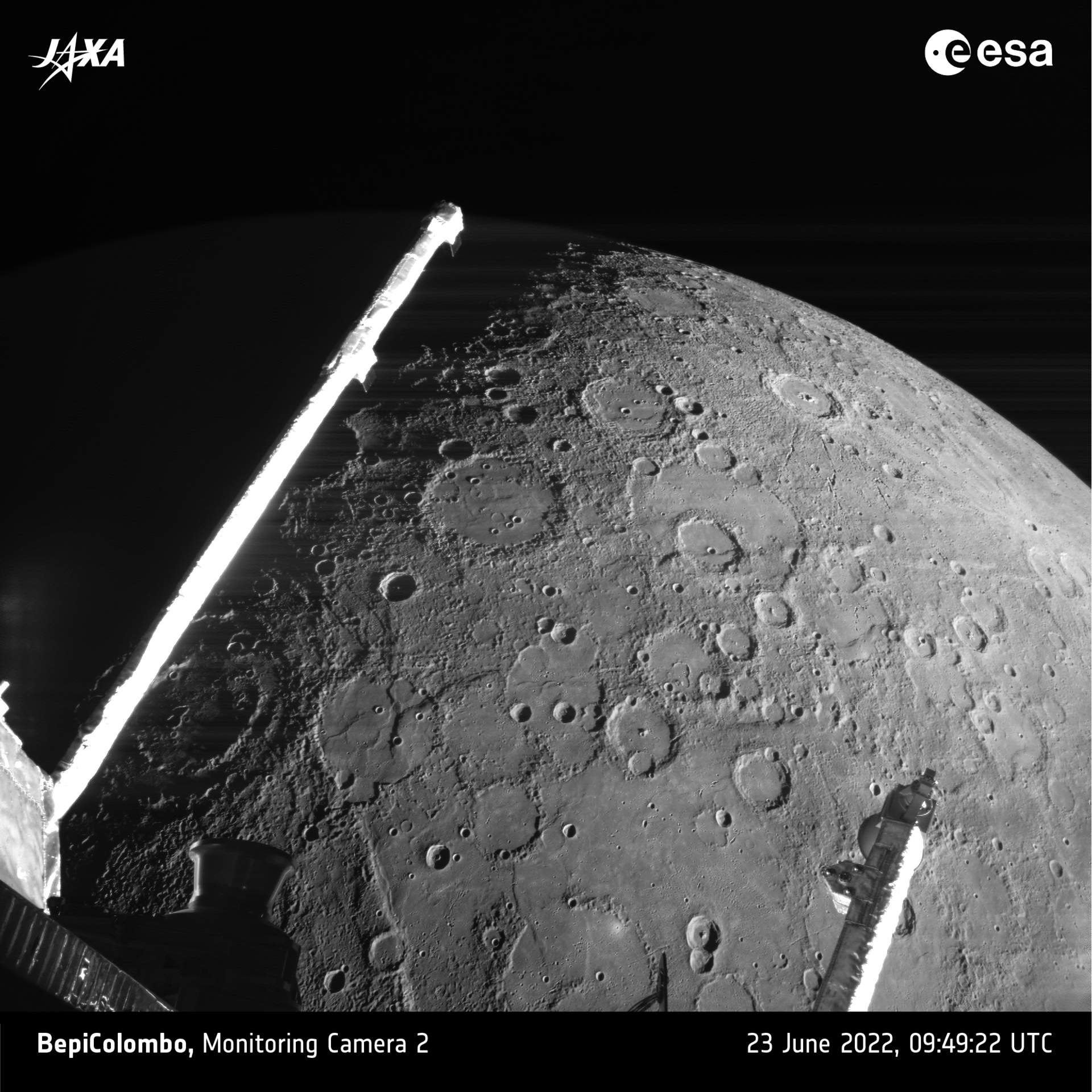
From a spacecraft that keeps trucking on, we go to some great news about a spacecraft still in its prime. And it involves pretty rocks or at least pretty craters.
Space exploration is slow. It takes time to build missions; it takes time to fly missions to their destinations. It takes even more time to transform images into a new scientific understanding.
My favorite example of the slow march of science is the BepiColombo mission to Mercury. On June 23, this mission made its second flyby of its target, sending back stunning images of this poorly understood world.
In 2025, BepiColombo will enter orbit around Mercury in two parts: ESA’s Mercury Planetary Orbiter and JAXA’s Mercury Magnetospheric Orbiter. Together, these twinned spacecraft will study Mercury in gravity, magnetism, light, and chemistry, allowing us to understand how it is shaped from the inside out. For now, the mission is just going to fly by as it uses Mercury’s gravity to adjust its orbit. This is flyby two of six that BepiColombo will make of Mercury. It has also made one flyby of Earth and will make two of Venus.
This mission was initially thought through in the 1980s and 1990s. It was named in 1999. It will arrive at its target in 2025. This is multigenerational science, like Voyager, where the people who design the mission know it is the students of their day who will do the eventual science of tomorrow.
Some science requires generational amounts of time. And some science requires eons worth of time. Such is the case with scientists trying to understand an event known as the ‘Palaeocene-Eocene Thermal Maximum’ or PETM, which occurred about 56 million years ago. During this time, the planet warmed by five to eight degrees Celsius, resulting in the extinction of numerous deep-sea organisms.
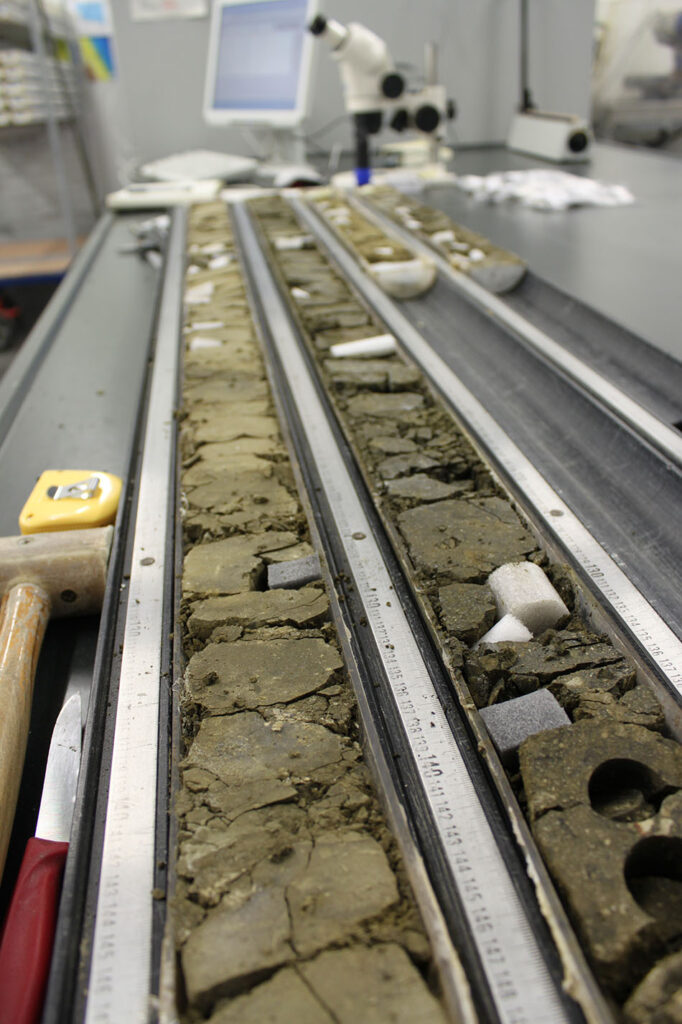
Now, in a new paper to be published in Nature Geoscience, scientists analyze cores taken from around the North Atlantic and found substantial evidence that the final stages of Greenland and Europe rifting apart released massive amounts of carbon from the mantle. The evidence shows that this period of intense volcanic activity lasted over 200,000 years, which makes it a close match to the 170,000 years of the PETM. Lead author Tom Gernon explains: This finding is significant because we know that parts of the continental mantle in this region are enriched in carbonates, a major source of carbon. This rapid increase in mantle melting likely released a very large volume of carbon – certainly more than we had previously expected.
Because the PETM resulted in a distinct global warming event, scientists are using it as an analog for the current climate change, despite the difference in mechanism. They’re interested in the cause, but they are also interested in the biological outcome. A mass extinction event changes the course of evolution on Earth, and that seems to be where we are currently headed.
Okay. That story requires a bit of a palette cleanser. For those of you watching us on NowMedia or on YouTube, I now present the globular cluster Terzan 9. If you’re listening to the podcast, you’re just going to need to click over to DailySpace.org to check this picture out.
The good folks at the Space Telescope Science Institute have released a stunning image of the globular cluster Terzan 9. Located toward the bulge of our galaxy, this bedazzled system is part of a research study of globular clusters located in high-density regions. Normally, these puff balls of stars linger in the outskirts of galaxies. It’s not understood how they form, but this research may help us understand how the systems can be affected by their environment.

That research takes time. For now, we just have a reminder that the universe wears some truly beautiful gems of light.
And now, let’s look down – not on Earth but on Europa – as we think about the worlds we can dream of the next generation exploring.
I always find it amusing and interesting how, in the lead-up to a planetary mission launch, scientists start using every possible space and ground telescope to stare at the future target ahead of arrival. We saw this with New Horizons where the Hubble Space Telescope helped discover two more moons at Pluto as the team was looking for potential spacecraft hazards. And now, as we get closer to the planned launch date for Europa Clipper in 2024, Hubble is at it again.
Using ultraviolet observations taken by Hubble, a team of scientists has mapped out the sulfur residue on the surface of Europa. Okay, that sounds like a somewhat weird thing to map out on a planet with an icy surface and a potentially massive subsurface ocean, but bear with me here. All of that sulfur on the surface could help us understand the composition of the ocean, and in that ocean rests some of our hopes for finding life beyond Earth.
Not unexpectedly, the new ultraviolet map for sulfur dioxide correlates with images taken in visible wavelengths that show dark surface regions. What’s even more interesting is that the sulfur is mostly concentrated on Europa’s trailing side. Co-author Philippa Molyneux explains: Most of the sulfur dioxide is seen on the ‘trailing’ hemisphere of Europa. It’s likely concentrated there because Jupiter’s co-rotating magnetic field traps sulfur particles spewing from Io’s volcanoes and slams them against the backside of Europa.
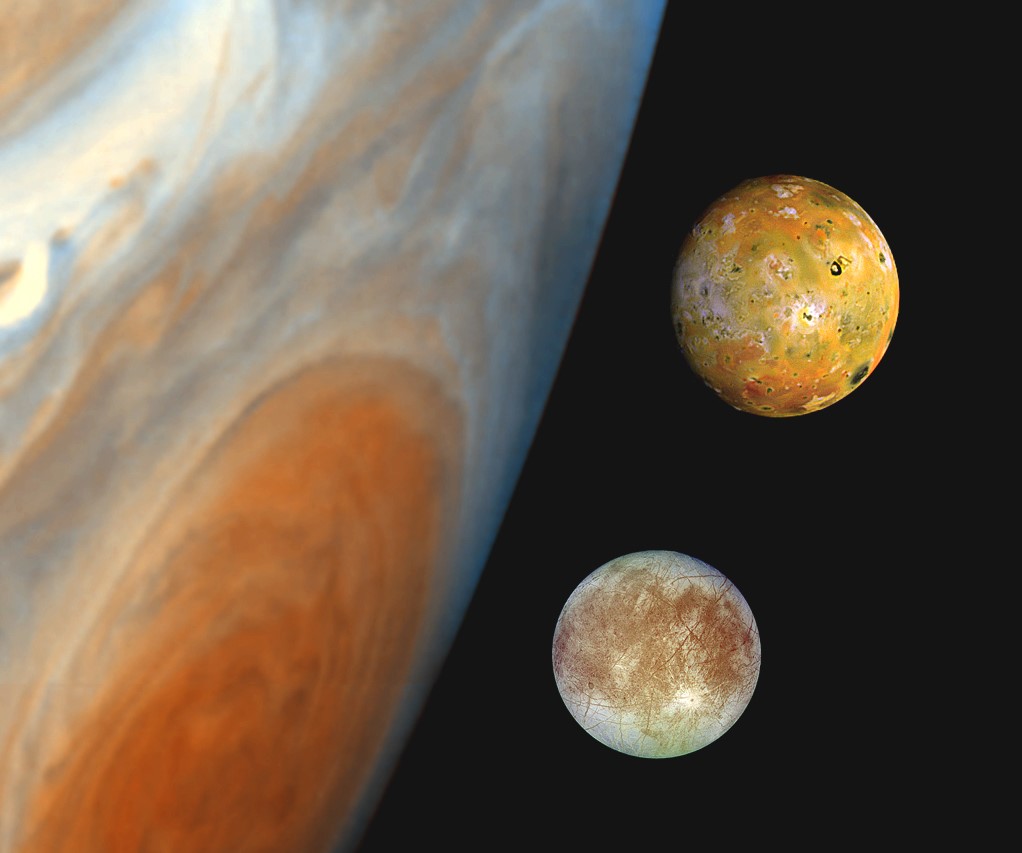
That magnetic field then causes a chemical reaction between the water that reaches the surface on Europa and the sulfur that arrives from Io, creating the sulfur dioxide residue.
On a side note, this paper also confirmed that the suspected water ice on Europa does not look like water ice in the ultraviolet. The team will continue to investigate this discrepancy, but an answer may have to wait until Europa Clipper reaches the Jovian system and sends back data.
One mission that we don’t have to wait for is NASA’s Juno. That amazing spacecraft has been doing close flybys of Jupiter since 2016, analyzing the magnetic fields, the atmosphere, and even the moons. Now, in a new paper published in Astronomy & Astrophysics, scientists have determined that Jupiter’s atmosphere isn’t a homogenous mix of gases and actually contains a significant amount of metals. And by metals, we mean elements that aren’t hydrogen or helium.
Okay, we have a confession to make. The press release for this story came out early in June but didn’t cross our radar until yesterday when a trending article on Twitter had the title Bizarre news story of the day: Jupiter apparently ‘eats’ other planets. That got our attention, and so we found the paper and the press release.
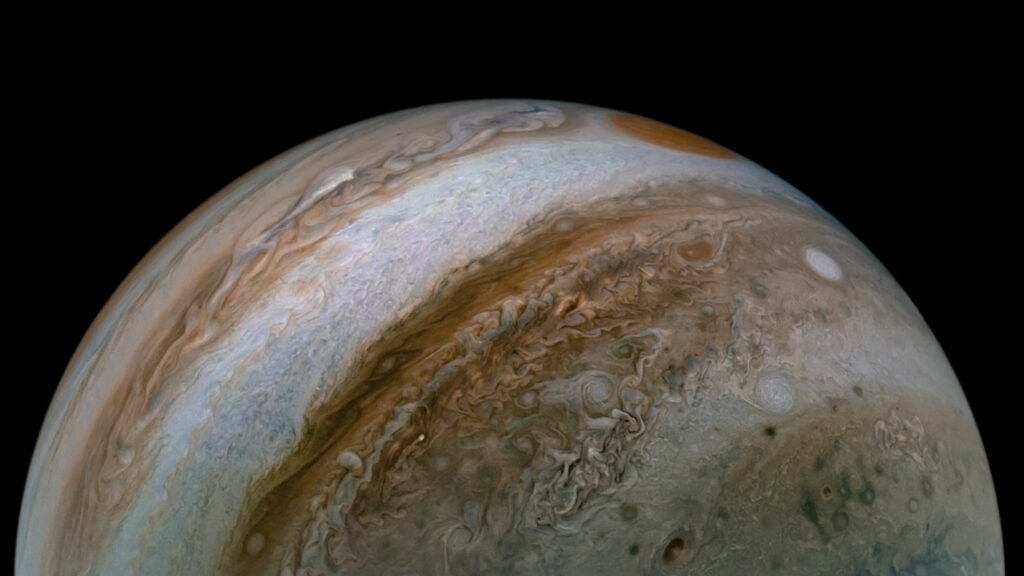
In the interest of journalistic integrity, no. Jupiter does not eat other planets. Not now anyway, and really, not in the past. It’s not hanging out there in our solar system, pulling in large worlds and demolishing them. But back in the planetary formation period of our solar system, Jupiter did have a tendency to pull in kilometer-sized planetesimals.
To find this out, the team analyzed gravitational data collected by Juno, which allowed the team to ‘see’ below the stormy surface to the inner envelope of the planet’s atmosphere. They found more metals in the inner parts of Jupiter’s atmosphere than in the outer layers. Lead author Yamila Miguel explains: There are two mechanisms for a gas giant like Jupiter to acquire metals during its formation: through the accretion of small pebbles or larger planetesimals. We know that once a baby planet is big enough, it starts pushing out pebbles. The richness of metals inside Jupiter that we see now is impossible to achieve before that. So we can exclude the scenario with only pebbles as solids during Jupiter’s formation. Planetesimals are too big to be blocked, so they must have played a role.
The findings in this research mean that Jupiter doesn’t have convection below the surface as previously thought. And it also doesn’t mean that Jupiter eats planets, despite headlines that say otherwise. But hey, the headline caught our attention, and now you know the science behind the story.
Coming up next, Erik is going to review the latest season of For All Mankind.
Before we get into the review of For All Mankind, a very near future, currently scheduled for next week, mission to explore the moon.
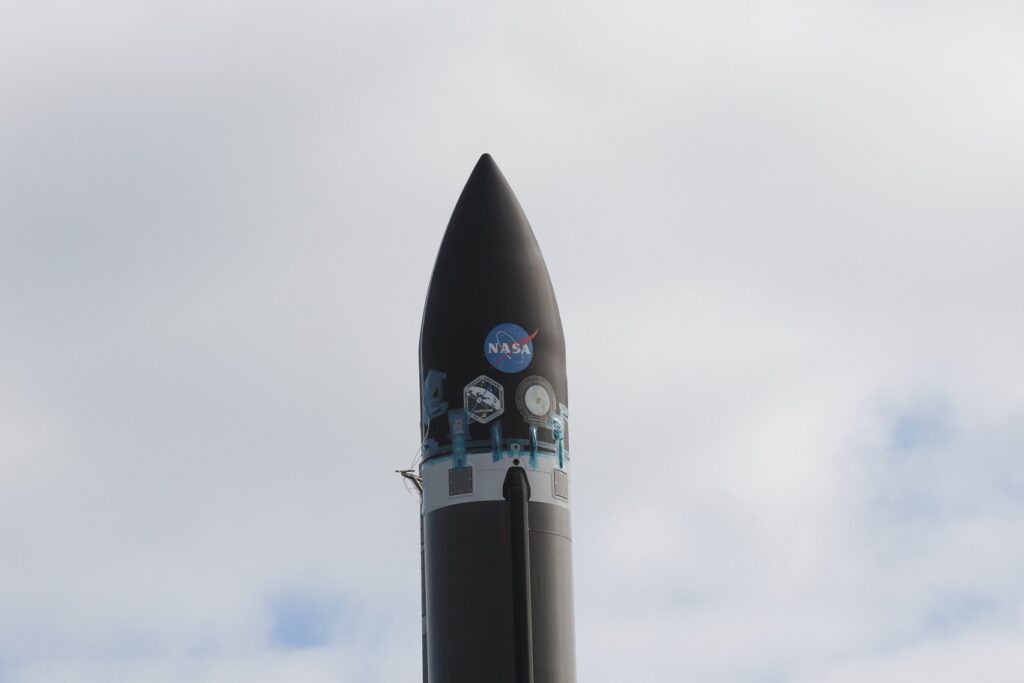
Rocket Lab will launch one of their company’s Electron rockets carrying NASA’s CAPSTONE or Cislunar Autonomous Positioning System Technology Operations and Navigation Experiment to the Near Rectilinear Halo Orbit of the moon. This will be Electron’s first mission beyond Earth’s orbit.
Electron will yeet the 24-kilogram – big for a CubeSat, small for a regular sat – payload into its special lunar orbit using a brand new kick stage, the Lunar Photon. It is much bigger than the regular kick stage, and on future missions will take Rocket Lab payloads to other planets.
CAPSTONE will take months to get to lunar orbit after delivery into its trajectory by Electron/Lunar Photon. This is because it uses a ballistic capture method, a trajectory that saves a lot of propellant, letting it launch on a smaller and cheaper rocket at the expense of time.
The ballistic capture method uses the Moon and Sun’s gravity to pull the spacecraft closer to the Moon so that the spacecraft only has to use a little fuel to insert itself into orbit. NASA’s Orion spacecraft isn’t going to be using the Near Rectilinear Halo Orbit orbit any time soon, CAPSTONE has plenty of time.
Once in this special orbit, CAPSTONE will first check that the orbit is good for future spacecraft and that a spacecraft can leave and return into it. It will also demonstrate a “spacecraft to spacecraft navigation services that allow future spacecraft to determine their location relative to the Moon without relying exclusively on tracking from Earth”. It will also demonstrate a small atomic clock, also used for navigation.
Review
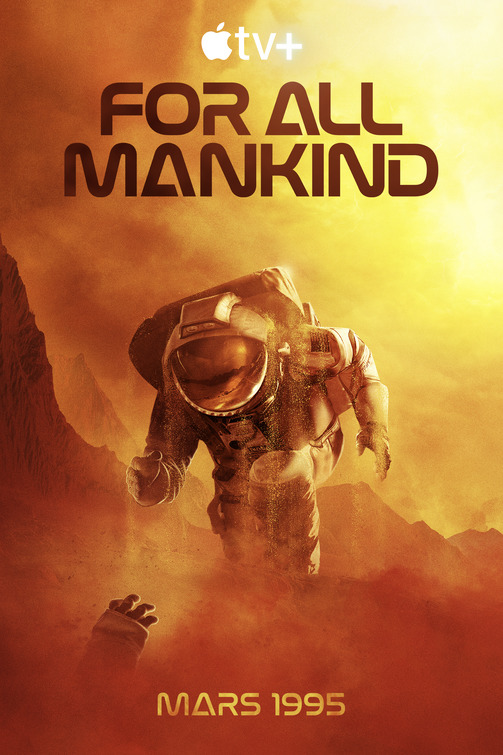
Instead of a camera or lens review this week, I’m reviewing a tv show – For All Mankind on Apple TV+. Season three is now out, and this will be a review of the first episode, entitled Polaris. If you haven’t watched the first two seasons, you should hit pause, binge-watch them, and then come back and unpause.
For All Mankind is Apple’s alternate history of the space race. For those who haven’t seen it yet, the basic premise is “what if the space race continued”. Season one concludes with a permanent U.S. lunar base. Season two ups the tensions, and global nuclear war is averted at the last moment of the season’s finale, but not before a dramatic, and ultimately pointless, major character death and a dogfight between two space shuttles in lunar orbit. Yes, space shuttles in lunar orbit. How they got there is never really explained in the show, directly.
Season three takes place in 1992, ten years after the end of season two. Like the beginning of Seasons one and two, there is a montage of historical events that further branch off from our timeline to bridge between the seasons.
One event that differs is the launch of the JWST. Instead of having that name and launching in 2022, it launched in the 90s and was named after Thomas Paine, a real-life NASA administrator who, in-universe, dies on KAL 007. The Paine telescope was also designed to be repaired in orbit. A mention of this happening occurs in the episode proper; however, the major focus of this season is the first human landing on Mars, which was hinted at in the season two finale and season three trailer. A secondary plotline in season three is the introduction of commercial space tourism.
The first episode features a visit to the Polaris Orbital Hotel, which is attached to what looks like an ISS, built during the ten years between seasons two and three. Several of the main characters from the last season are in the hotel before it opens for their kids’ wedding. An accident happens at the station that almost results in a massive structural failure, but it’s averted at the last moment. Of course. But not before a couple of station workers are violently killed, though.
Writing-wise, the season opener was okay, but I found the space station crew’s dialogue during the emergency a little stilted and bland. In general, the technical discussions the characters have don’t feel very organic, just randomly listing concepts and components, like they’re talking about “oh the blah blahmajig, that will fix the problem with the engine-inator” when they’re talking about a niobium nozzle on a nuclear thermal rocket engine, both of which are authentic pieces of technology. That’s probably my rocket nerd brain, though.
What really bugged me about the episode was bringing back one of the squicky subplots from season two that was, in my opinion, just unnecessary. It did nothing to advance the plot, and a whole bunch of other fans didn’t like it last season or the reminder in this episode.
One of the characters in that subplot got to be a hero during the accident though, somewhat redeeming him in my eyes. Though how he got the skills to pull this off is never really explained, except for a passing reference in the news montage to him becoming an astronaut.
Despite all of this, I’m going to stick to and watch the rest of Season three of For All Mankind, which is available on Apple TV+.
This has been the Daily Space.
You can find more information on all our stories, including images, at DailySpace.org. As always, we’re here thanks to the donations of people like you. If you like our content, please consider joining our Patreon at Patreon.com/CosmoQuestX.
Credits
Written by Pamela Gay, Beth Johnson, Erik Madaus, and Gordon Dewis
Hosted by Pamela Gay, Beth Johnson, and Erik Madaus
Audio and Video Editing by Ally Pelphrey
Content Editing by Beth Johnson
Intro and Outro music by Kevin MacLeod, https://incompetech.com/music/


 We record most shows live, on Twitch. Follow us today to get alerts when we go live.
We record most shows live, on Twitch. Follow us today to get alerts when we go live.